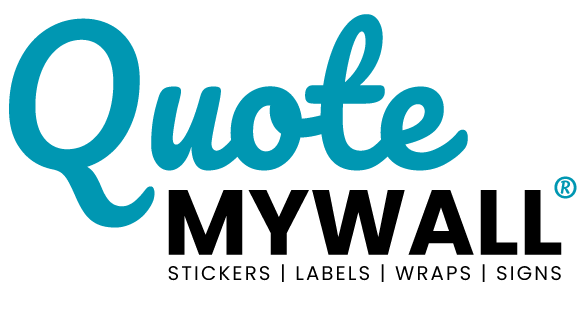
Mastering Balance: Functionality and Aesthetics in Name Labels
Share
Frequently Asked Questions
1. Why are name labels important?
2. What makes a name label functional?
3. How can I enhance the aesthetics of my name labels?
4. What should I consider when balancing functionality and aesthetics in label design?
5. What are some trendy ideas for name labels?
When it comes to organizing your space or personalizing your belongings, name labels play a crucial role. Particularly for families, schools, and businesses, these labels enhance both functionality and aesthetics. However, striking the right balance between the two is essential. In this article, we explore how to effectively design clothes labels that are both practical and visually appealing, ensuring they serve their purpose while looking great.
The Importance of Name Labels
Name labels are more than just stickers or tags; they're essential tools for keeping track of personal items, especially in environments where multiple individuals gather such as schools or offices. Here are some of the core reasons why name labels are indispensable:
- Organization: They help maintain order by making it easy to identify personal belongings.
- Personal Identification: Especially useful for children, name labels prevent mix-ups.
- Professional Appearance: For businesses, well-designed labels reflect professionalism and attention to detail.
- Creative Expression: Personalized labels allow users to showcase their style and preferences.
Functionality: The Backbone of Clothes Labels
When discussing functionality in the context of clothes labels, several crucial aspects come into play. A label must not only clearly convey information but also prove durable and easy to apply. Let's delve into what makes a name label functional:
Durability is Key
The material of your clothes labels should be able to withstand wear and tear. Whether subjected to frequent washing or constant handling, durability ensures that your labels stand the test of time.
Ease of Application
No one wants to struggle with label placement. Opt for clothes labels that are user-friendly and can be easily applied without fuss. Look for adhesive qualities that stick well but also allow for repositioning.
Clear and Readable Text
Above all, a label's primary function is communication. Choose fonts and contrasting colors that enhance readability, ensuring that information is conveyed quickly and efficiently.
Aesthetics: Adding a Personal Touch
The visual appeal of your name labels can greatly influence their effectiveness. Here’s how to make them eye-catching:
Color Schemes and Patterns
Utilizing attractive color combinations and patterns can make your labels stand out. Consider employing colors that resonate with your brand or reflect personal style, but choose combinations that remain easy to read.
Custom Fonts and Graphics
Fonts can convey a lot about the personality behind the item. Playful fonts may appeal to children, while sleek, professional fonts work well in a corporate setting. Adding relevant graphics can also enhance the aesthetic appeal, making labels memorable.
Size and Shape Considerations
The size and shape of your clothes labels are just as important as their design. Smaller, rectangular labels may suit children's clothing better, while larger, creatively-shaped labels can serve products intended for adults, like laundry bags or sports gear.
Finding the Balance
Now that we understand both the functional and aesthetic components of name labels, the real question is: how do we find that perfect balance? Striking equilibrium is vital in ensuring that labels fulfill their purpose without sacrificing their design.
Define Your Primary Use
Understanding the primary use of your labels can significantly aid in balancing functionality and aesthetics. Is their main purpose identification, or do you want them to serve an additional decorative function? Define your objectives to better guide the design process.
Create a Design Guide
Establishing a design guide can help maintain consistency. Consider parameters such as colors, fonts, and visual elements that resonate with your brand or personal aesthetic. This guide ensures that each label adheres to your overall vision.
Test and Adjust
It’s essential to gather feedback on your label designs and adjust accordingly. You may want to conduct surveys or informal polls to assess the effectiveness of your labels in both form and function. This feedback can guide future iterations and improvements.
Practical Applications of Name Labels
Let’s look at real-life applications where clothes labels can shine:
Family Organization
In a busy family setting, name labels can make a significant difference. From labeling clothes for school to organizing toys, these labels help avoid confusion. Use a bright color scheme that appeals to kids while ensuring they remain functional during everyday use.
Educational Settings
In classrooms, name labels can help teachers and students alike. From personal items like lunchboxes and jackets to classroom supplies, properly designed labels can foster an environment of ownership and responsibility while looking great on each item.
Corporate Branding
For businesses, utilizing name labels in a branded format serves dual purposes of identification and marketing. Professional-looking labels can enhance the overall brand image. Ensure your labels carry your brand's color palette and logo for maximum impact.
Trendy Ideas for Your Name Labels
Keeping up with trends can significantly influence how appealing your clothes labels appear. Here are some trendy ideas to consider:
- Eco-Friendly Materials: As sustainability becomes more of a priority, labels made from recycled or biodegradable materials are increasingly popular.
- Minimalist Designs: Simple labels with a clean aesthetic often carry a modern look that many consumers favor.
- Interactive Elements: Incorporating QR codes that link to additional content can add a layer of interactivity to your labels. Users love unique experiences!
Some Final Thoughts on Label Design
In summary, finding the balance between functionality and aesthetics in name labels is not just achievable—it's essential. By prioritizing durability, readability, and user-friendliness in functionality while integrating captivating colors, fonts, and designs, you can create labels that are not just useful but also visually appealing. Remember, whether for personal use or professional branding, well-thought-out clothes labels can offer tremendous benefits, from better organization to enhanced brand image. Embrace the process, experiment with different elements, and find your perfect balance!
